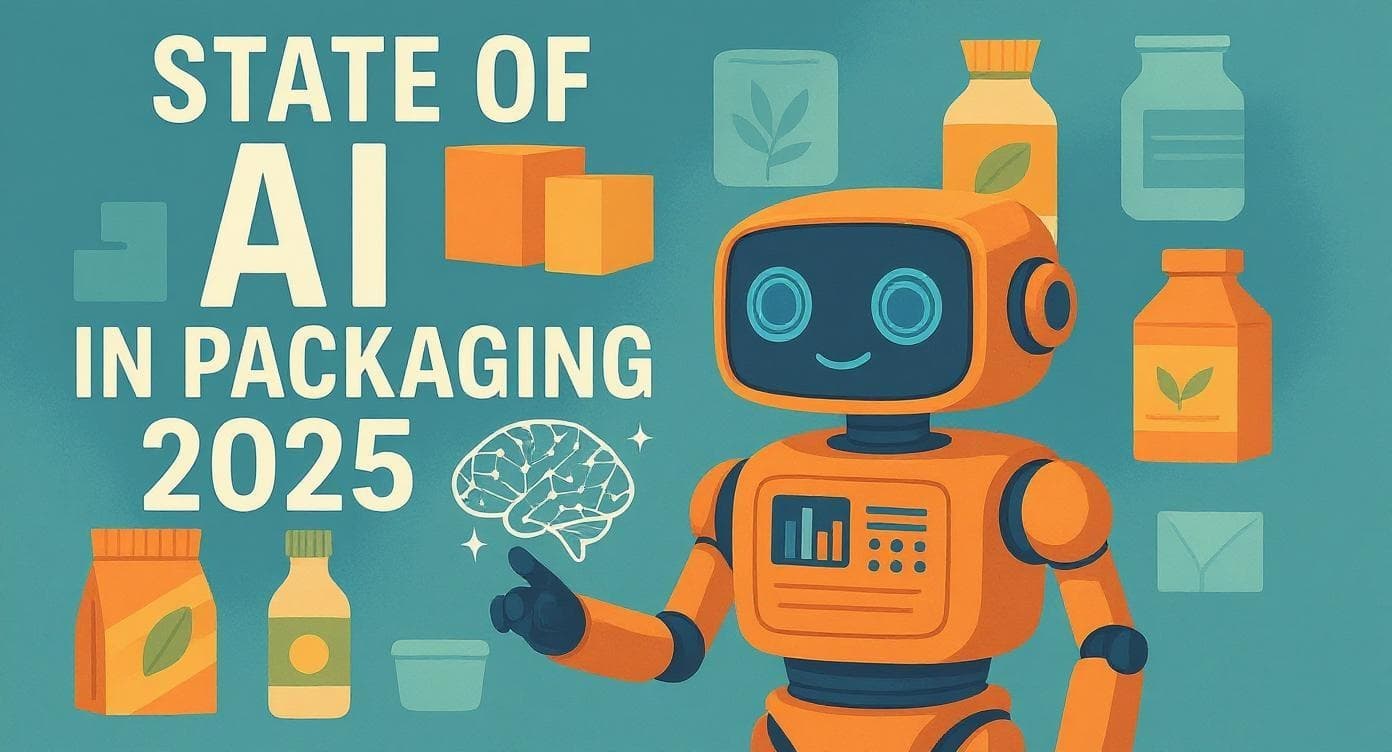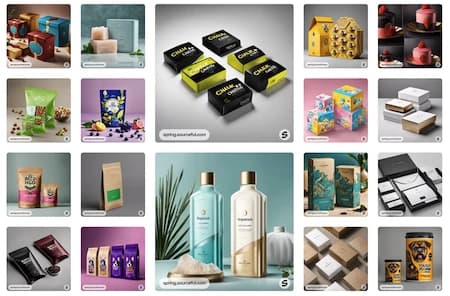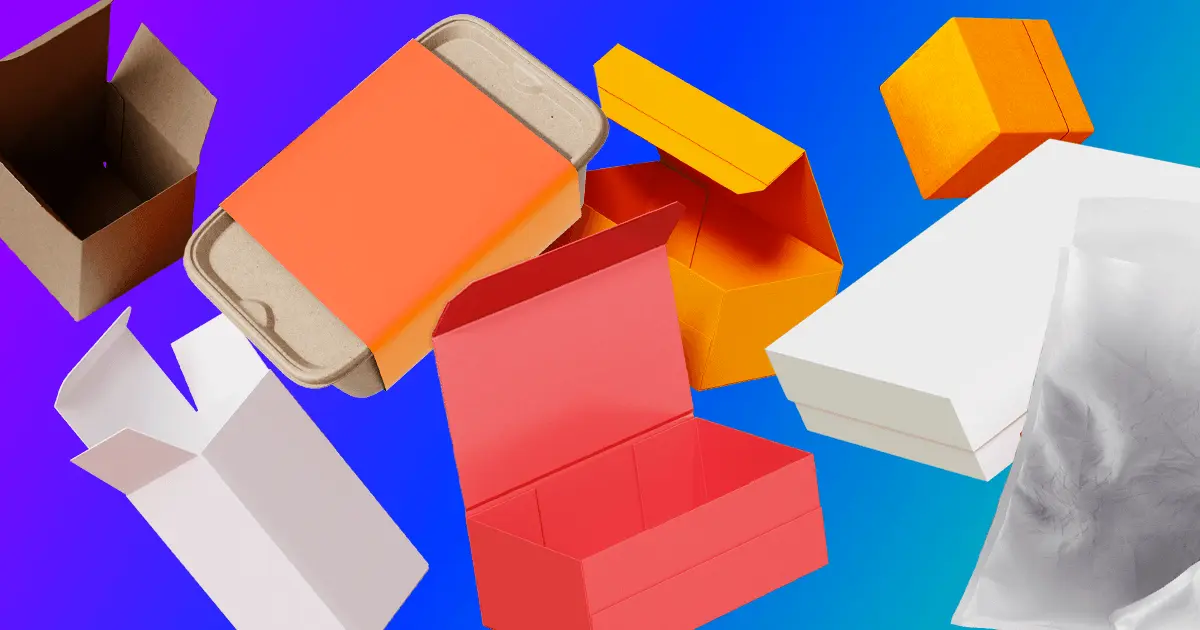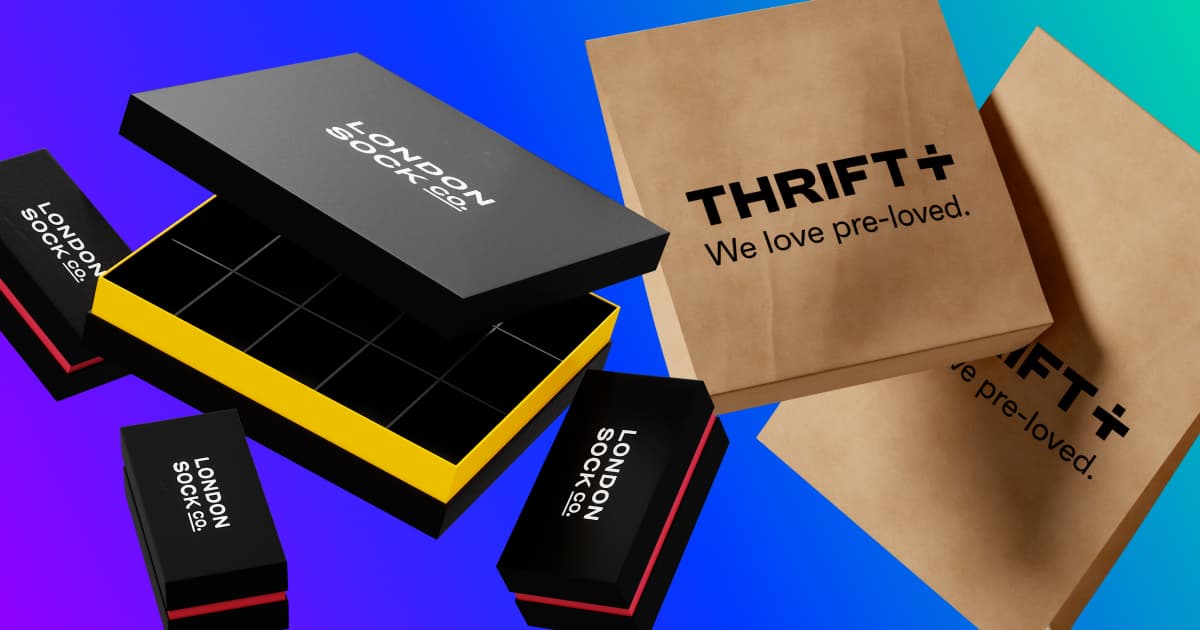Blog Post6 more sustainable cosmetic packaging ideas in 2023
- Sustainability
- Materials
- Design
Rachel LawtonAugust 7, 2023 - 7 min read

It’s happened to all of us. You’re browsing the hair and skincare shelves and suddenly find your eyes drawn to that one product. What makes it different? Maybe it’s the bold, bright colours, or the sleek, cool curves. Whatever it is, it’s proof that cosmetic packaging does much more than just deliver your product.
Striking packaging helps to drive brand awareness and attract your ideal customer. And this is true for e-commerce cosmetics as well as on-shelf products, with many still bought in-store. But, with packaging waste at an all-time high, how can you choose packaging that impresses without the environmental impact?
For starters, the most important thing to do is conduct a full life cycle assessment of your current or potential packaging. It should look at each step in the supply chain (production, transport, disposal etc.) so you can get a full picture of your packaging's carbon footprint. From there, you can make informed decisions about your next packaging move.
That being said, we’re seeing six packaging styles consistently coming out on top in different industries. Here, we break down each of them to help you choose the right one for your product.
More sustainable cosmetic packaging
- Metal packaging
- Glass packaging
- Paper-based packaging
- Bamboo packaging
- Refillable packaging
- Post-consumer recycled packaging
1. Metal: best for stylish cans, tins and tubes
Most people will already be familiar with metal packaging in cosmetics to some degree — hairspray and deodorant cans are a common sight. But as a stylish and more sustainable alternative to plastic packaging, metal is growing in popularity.
Metal, including aluminium, tin, and stainless steel, is used in tubes, bottles, pumps, and dispensers. It’s protective against air, moisture and light, which makes it great for protecting cosmetic formulations. It’s also a robust packaging material, offering greater protection during handling than softer paper-based or plastic products.
Metal cosmetic packaging can be customised with labels, embossing, or printing to suit your brand. And its smooth, shiny finish can evoke a sense of style and luxury, especially in comparison to plastic packaging. A great example of this comes from L’Occitane, which gives customers an overall high-end experience with its decadent products housed in stylish tubes and tins.
Metal is also infinitely recyclable without losing its quality. But don’t forget that the thicker it is, the more it weighs and the more emissions it creates. So if you do opt for metal packaging, make sure it’s thin and light.
Pros
- Durable
- Recyclable
- Lightweight
- Easily customised
- Temperature resistant
Cons
- Opaque
- May use BPA lining
- Can be energy intensive to produce
- Not suitable for all products (e.g. acidic products)
2. Glass: best for jars and bottles
The growing wellness movement is putting glass packaging centre stage. It’s safe, gives products a luxury appearance and can be customised to appeal to minimalist tastes. And the top brands know this, like Clinique, which is well known for its sleek glass-packaged skincare and cosmetics products.
The great thing about glass is that it’s inert, meaning it doesn’t react to whatever it’s in contact with. Plastic packaging, on the other hand, is known for leaching hormone disruptors like BPA (bisphenol A) into its contents. And metal packaging can also be reactive, particularly if your product contains acidic formulas — think vitamin C serums or hyaluronic acid creams.
You don’t want your product to change colour, texture or odour because of its packaging, and you certainly don’t want it to become a health hazard. So glass is a great choice for cosmetics products. It can even extend your product’s shelf life by up to 15%.
Glass packaging is 100% recyclable without losing its quality, which reduces the need for raw materials. It’s even better if customers return their glass packaging to be reused as it is, so you need to create less of it. But one downside to glass packaging is its weight. It’s best used when the distance between you and your customer is small, so that you can keep your transport emissions down.
Driving the demand for glass are nail care products, face serums, oils and essences, which can be packaged in dropper and push pump bottles and ampoules.
Pros
- Inert
- Reusable
- Recyclable
- Transparent
- Easily customised
- Stylish
Cons
- Fragile
- Initially energy intensive to produce
- Heavier than plastic (increases transportation costs and emissions)
3. Paper-based packaging: best for dry goods
Paper-based packaging is gaining popularity as an alternative to single-use plastic packaging. For starters, it gives products a natural, organic feel, which can appeal to climate-conscious customers. It’s also lightweight, so it can help keep your transport emissions (and costs) down.
Paper isn’t waterproof, so it’s not traditionally ideal for liquid cosmetics. But some packaging providers are starting to scale up production of barrier-coated, grease-resistant paperboard tubes. This is great because it means paper can replace those waterproof but environmentally harmful materials, like plastic. And they’re catching the attention of some big industry names. Like L’Oréal, which has started using some paper bottles in a bid to become more sustainable.
Paper can also make an impression as your secondary cosmetics packaging. This doesn’t refer to the bottle or jar containing your product (that’s primary packaging). Secondary packaging refers to the box or envelope that packages your bottle, jar or tin of product. For example, customisable mailer boxes. These are a great way to not only deliver your product, but also display it in a striking way that gives your customer a memorable unboxing experience.
Another great thing about paper is that it’s widely recyclable, and can be made from post-consumer recycled materials, which reduces your dependence on virgin materials. But if your packaging does require virgin materials, make sure you source these from a responsibly managed forest overseen by the Forest Stewardship Council (FSC). This will help keep your environmental impact as low as possible.
Pros
- Low cost
- Recyclable
- Lightweight
- Easily customised
- Recycled materials available
Cons
- Not airtight
- Not waterproof
- Susceptible to damage
4. Bamboo packaging: best for an innovative look
Bamboo is a fast-growing and renewable resource. Like paper packaging, it provides a natural and organic appearance. This makes it an attractive material for brands that want to appeal to sustainability-oriented customers. In fact, the bamboo cosmetic packaging market is expected to grow at a rate of 12% from 2021 to 2028.
Bamboo is easy to customise, strong and durable. It can be used to package a range of products, including both dry and liquid-based products. And it can be offered as a refillable packaging option too. Like the stylish eyeshadow palette offered by Cosmetics company Elate, which customers can even fill with their unique, preferred shades.
One downside to keep in mind is that bamboo packaging might need additional materials, like plastic or silicone, to create airtight seals. These will add to your carbon footprint.
Pros
- Durable
- Low cost
- Renewable
- Easily customisable
- Natural and organic look
Cons
- Opaque
- May need additional materials
5. Refillable packaging: best for reducing waste and energy use
Granted, this is more of an approach than a product itself. But we thought it's worth talking about. Refillable packaging is gaining traction among consumers interested in reducing their environmental impact without compromising on their favourite cosmetics. This corner of the market is moving so fast that UK sales of refillable luxury products increased by 47% in just seven months in 2022.
So what counts as refillable packaging? We’re talking glass jars and bottles, containers made from aluminium, stainless steel and silicone, and plant-based packaging like bamboo and wood.
Many stores are now offering incentives to encourage customers to return their packaging, which has the added bonus of driving brand loyalty and sales. Like cosmetics and skincare retailer Lush, which offers a free face mask when customers return five empty pots. Meanwhile, the Burt’s Bees handy refillable lip balm container shows it’s not just the obvious pot and jar style packaging that can be refilled.
Providing these refillable options can help reduce waste, dependence on virgin materials and the energy required to make new packaging. But there’s a caveat: to withstand multiple uses, the materials need to be thicker or stronger than the single-use alternatives. This means there’s a threshold number of reuses you need to hit to reap the sustainability rewards.
Pros
- Reduces waste
- Generates brand loyalty
- Reduced need for procurement and manufacturing
Cons
- Requires additional logistics
- Threshold number of uses must be hit
- Not suitable for all products
6. Post-consumer recycled packaging: best for reducing raw material use
Post-consumer recycled (PCR) packaging is made from materials that have already been used and recycled. Like refillable packaging, PCR packaging reduces the need for virgin materials and keeps waste out of landfills for longer. This in turn brings down carbon emissions and its overall environmental footprint.
Aptar Beauty & Home’s airless pump is a good example here. It uses plastic destined for incineration or landfill, keeping it in circularity for that little bit longer. What’s important is that any recycled plastic must be considered food grade for it to be safe as cosmetic packaging.
Pros
- Cost-effective
- Reduces waste
- Easily customised
- Conserves resources
Cons
- May have limited availability
- Quality of recycled materials may vary
How to choose the most sustainable cosmetic packaging for your business
So, you know that you want to switch to more sustainable packaging and you have an idea of what’s out there. But before making any decisions, consider these four key questions:
1. What are your product’s needs?
Cosmetic products are delicate and can leak, spill or crumble during handling. So, you need packaging that delivers your product to the customer as intended. For example, where you might use paper to package a bar of soap, you’d probably want a sealable bottle for a face serum.
Knowing the level of protection your product needs can rule out packaging that’s not suitable, leaving you to choose from a smaller, more appropriate range.
2. How sustainable is the product?
Knowing the materials and processes that go into making cosmetic packaging can help you make more sustainable packaging decisions. It’s no secret, for example, that plastic is derived from petroleum and has a devastating environmental impact. So, you’d probably want to think carefully about using cosmetics packaging made with it.
On the other hand, paper and card are some of the most sustainable and budget-friendly packaging materials around. They can be sourced from responsibly managed forests, are renewable and can be recycled into new products. Choosing more sustainable materials can have a positive impact on your carbon footprint compared to the alternatives.
3. What end-of-life options exist?
Governments worldwide are cracking down on brands and manufacturers, making them take more responsibility for what happens to their packaging after use. This means you’ll need to think about your target market and what recycling facilities they can access. Because it’s no use choosing innovative materials if there’s nowhere to process them. If you discover that your packaging is more likely to end up in general waste rather than being recycled, consider other materials.
Increasingly, customers claim that packaging informs their purchasing decisions. So, making it easier for them to dispose of your packaging is an opportunity to retain and even build your customer base.
4. What do you want your packaging to say about you?
Packaging is advertising. It shows your customer who you are, what you stand for and how you understand them. So, packaging that reflects your brand’s personality is a must.
If you want to appeal to a minimalist mindset, glass packaging with neutral labels is a great option. Or, for a luxury feel, you might opt for metal. Both materials can be customised to suit your brand whilst being more sustainable than plastic. Meanwhile, the raw, natural appearance of kraft paper can send a strong sustainability signal to your customers.
Ultimately, choose packaging that aligns with your brand personality and message.
Get started with more sustainable packaging with Sourceful
Cosmetics packaging is vital for delivering your product safely and intact. But with packaging waste continuing to build up and customers seeking more sustainable solutions, there’s never been a better time to switch to a more sustainable option.
From glass to metal and paper, there are materials that do a great job protecting products whilst being reusable and easily recycled.
For secondary packaging that beautifully boxes up your products, look no further than Sourceful. Our fully customisable, FSC-certified mailer boxes are the perfect package for cosmetic gift sets and subscription boxes. And, if you want something more bespoke, get in touch to discuss your packaging needs. We’d love to help you.
Frequently asked questions
Q: Why haven't you included cornstarch-based packaging?
A: Cornstarch-based bioplastic is an alternative to conventional petroleum-based plastic. But, there are still some concerns about its environmental impact.
We’ve seen that biodegradable or compostable plastic made from cornstarch performs worse than traditional plastic on carbon footprint (and the majority of other impact categories). To verify this we ran a detailed life cycle assessment of these plastics in different contexts.
The main reason for the higher impact is that there are no public collections for compostable packaging in the UK. And only a very small proportion of the UK (around 3-5%) have a home compost heap. So the majority of cornstarch packaging is sent to general waste and ends up in landfill. Here, it eventually degrades, releasing methane and carbon dioxide.
We also found that the novel nature of these materials means that their production emissions remain quite high. So, there are still a lot of improvements needed to bring down the impact of production and the end of life emissions.
Q: Silicone packaging is reusable. Why isn’t it featured here?
A: Yes, silicone packaging is reusable, and you see a lot of it in the cosmetics industry such as in reusable travel containers.
Whilst silicone comes partly from sand, creating silicon-based products requires a lot of energy and the addition of some non-renewable, fossil fuel materials. This makes it a synthetic material, which, like plastic, has significant implications like persisting in the environment for thousands of years. Silicone is often very difficult to recycle. So, both production and end-of-life processes also create significant emissions which contribute to climate change.








